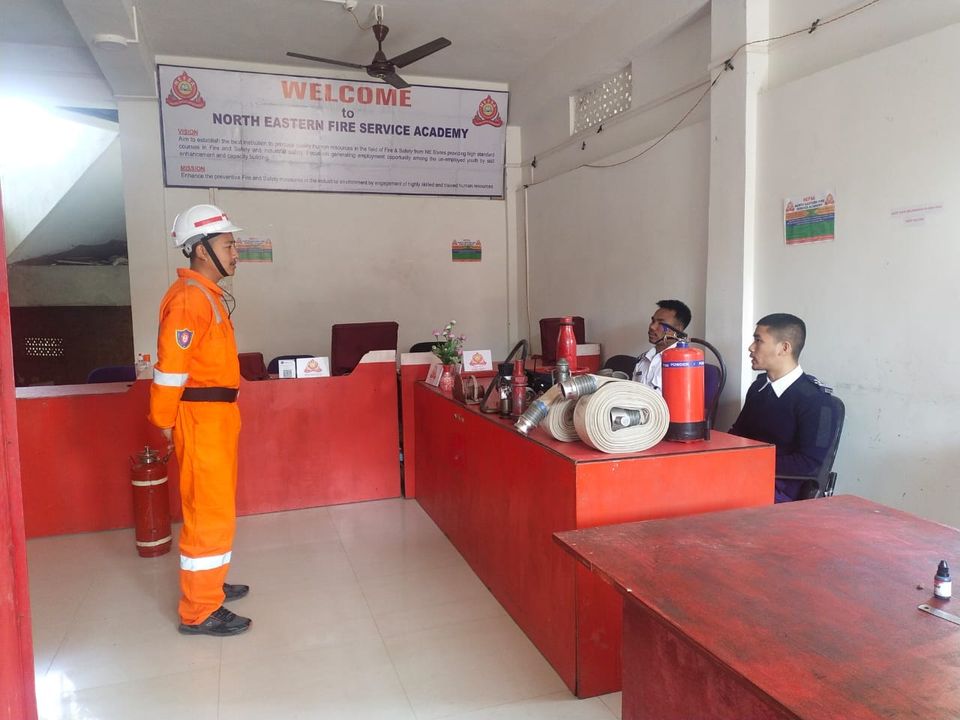Cultural heritage places are of paramount importance to preserve because of their immense historical, aesthetic, and cultural worth.
To prevent these priceless antiques from being destroyed by fires, fire safety is essential. This blog discusses how important it
is for students in Dibrugarh, North East, to receive fire safety training from NEFSA (North East Fire and Safety Academy), as
doing so will ensure that historical information in cultural heritage sites is preserved.
-
Understanding the Fire Risks in Cultural Heritage Sites:
Museums, historic structures, libraries, and archaeological sites are examples of cultural heritage sites that suffer particular
fire dangers.
Students are taught about the specific fire risks connected to these locations by NEFSA’s specialised training programme. These
risks include deteriorating infrastructure, flammable materials, electrical systems, insufficient fire suppression systems, and difficulties in detecting fires because of the preservation of delicate artefacts and structures.
-
Preventive Measures for Fire Safety:
For cultural heritage monuments to be protected, fire prevention is essential. The execution of preventive measures designed to
meet the unique requirements of cultural heritage sites is emphasised in NEFSA’s training programme. The careful handling and
storage of combustible products, upkeep of electrical systems, and the installation of fire-resistant materials and fire
suppression systems are among the fire safety precautions that students are taught about.
-
Fire Detection and Alarm Systems:
For a quick reaction and minimal damage to cultural heritage monuments, early fire detection is essential. Students receive
knowledge about fire detection and alarm systems suitable for cultural heritage sites through NEFSA training. They gain knowledge
of cutting-edge fire detection techniques, like smoke and heat sensors, as well as the significance of regularly maintained
fire alarm systems that issue early warnings, enabling rapid fire response and evacuation.
-
Emergency Response Planning:
A well-planned emergency response is essential for the protection of cultural assets in the case of a fire. The training course
offered by NEFSA is concentrated on emergency response preparation for cultural heritage assets. Students get knowledge of
emergency response teams’ significance and processes for communication and evacuation. Additionally, they learn how to
successfully reduce fire events through the use of fire extinguishers and collaboration with local fire services.
-
Collaboration with Cultural Heritage Professionals:
Collaboration between experts in fire safety and cultural heritage is necessary for cultural heritage preservation. The
training programme for NEFSA places a strong emphasis on collaboration with experts in cultural heritage in order to create
fire safety plans that are tailored to the particular needs of each site. The importance of continual communication, frequent
risk assessments, and the application of fire safety procedures that maintain the integrity of historical artefacts and
structures are all taught to students.
Conclusion:
Preservation of cultural heritage places for future generations depends heavily on fire safety. The specific training provided by NEFSA to students in Dibrugarh, North East, equips them with comprehensive knowledge, skills, and capacities for fire prevention, early detection, emergency response, and collaboration with experts in cultural heritage. NEFSA students support the preservation of history, art,
and culture by placing a high priority on fire safety in cultural heritage locations, ensuring that these priceless assets
continue to motivate and educate future generations. To join our academy click www.nefsaindia.com



